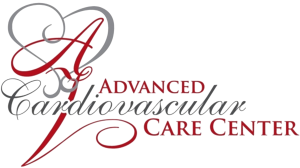There are four variety of ties or connections: ionic, covalent, hydrogen securities, and you may van der Waals affairs. Ionic and you can covalent ties is strong interactions that want a more impressive opportunity input to break aside. Whenever a component donates a keen electron from its outside shell, as in the new salt atom analogy more than, an optimistic ion is formed (Profile dos). The newest ability accepting new electron is actually negatively billed. Because the negative and positive charge desire, such ions sit together and you may form an ionic bond, otherwise a bond between ions. The weather thread utilizing the electron from one element existence predominantly towards almost every other ability. Whenever Na + and you will Cl – ions blend to produce NaCl, an enthusiastic electron from a sodium atom remains on the most other 7 from the chlorine atom, and also the sodium and you can chloride ions attention each other when you look at the an effective lattice from ions having a web zero charges.
Figure 2 Regarding the development out-of an enthusiastic ionic material, gold and silver coins clean out electrons and you can nonmetals gain electrons to get to an enthusiastic octet.
Covalent Ties
Yet another good chemical bond between 2 or more atoms is an excellent covalent thread. This type of bonds function whenever a keen electron are shared ranging from two facets and tend to be the best and more than prominent variety of agents bond into the way of living organisms. Covalent securities mode between the facets that comprise brand new physical molecules in our tissue. In lieu of ionic securities, covalent bonds don’t dissociate within the water.
Remarkably, chemists and you may biologists scale thread fuel differently. Chemists assess the natural energy out-of a bond (brand new theoretic strength) when you are biologists be more looking for how the bond behaves into the a biological program, which is always aqueous (water-based). In the water, ionic ties break much more readily than covalent securities, thus biologists would say they are weaker than simply covalent ties. For people who look in a biochemistry book, you will see something else entirely. That is a good exemplory instance of how same suggestions can trigger other solutions according to the perspective that you are viewing they regarding.
The hydrogen and oxygen atoms that combine to form water molecules are bound together by covalent bonds. The electron from the hydrogen atom divides its time between the outer shell of the hydrogen atom and the incomplete outer shell of the oxygen atom. To completely fill the outer shell of an oxygen atom, two electrons from two hydrogen atoms are needed, hence the subscript “2” in H 2 O. The electrons are shared between the atoms, dividing their time between them to “fill” the outer shell of each. This sharing is a lower energy state for all of the atoms involved than if they existed without their outer shells filled.
There are two types of covalent bonds: polar and nonpolar. Nonpolar covalent bonds form between two atoms of the same element or between different elements that share the electrons equally. For example, an oxygen atom can bond with another oxygen atom to fill their outer shells. This association is nonpolar because the electrons will be equally distributed between each oxygen atom. Two covalent bonds form between the two oxygen atoms because oxygen requires two shared electrons to fill its outermost shell. Nitrogen atoms will form three covalent bonds (also called triple covalent) between two atoms of nitrogen because each nitrogen atom needs three electrons to fill its outermost shell. Another example of a nonpolar covalent bond is found in the methane (CH 4 ) molecule. http://www.datingranking.net/tr/ashley-madison-inceleme The carbon atom has four electrons in its outermost shell and needs four more to fill it. It gets these four from four hydrogen atoms, each atom providing one. These elements all share the electrons equally, creating four nonpolar covalent bonds (Figure 3).

